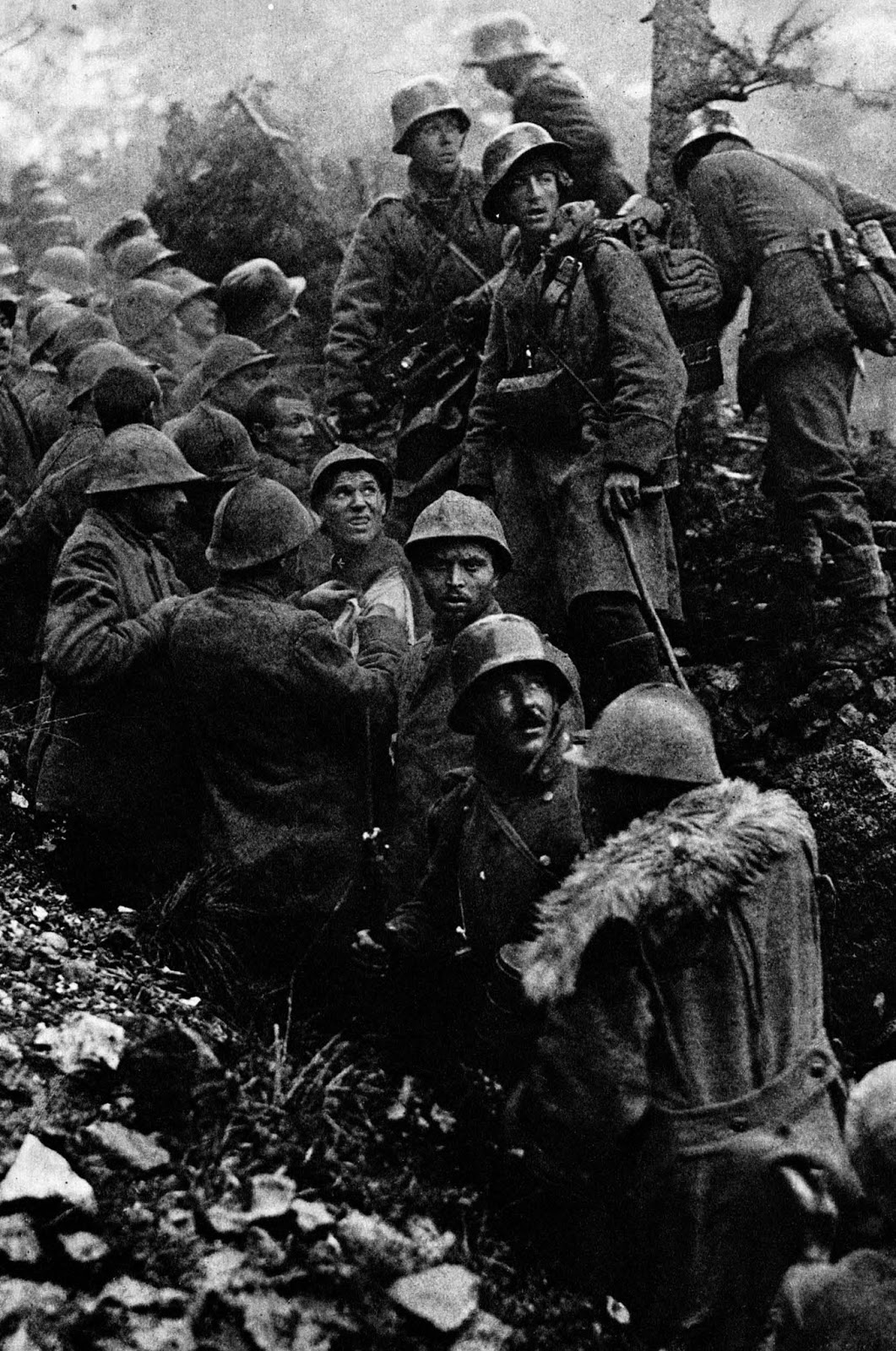
Captured Italian soldiers are escorted to the rear by German soldiers during the Battle of Caporetto, 1917.
The Battle of Caporetto (also known as the Twelfth Battle of the Isonzo or the Battle of Karfreit as it was known by the Central Powers) took place from 24 October to 19 November 1917, near the town of Kobarid (now in Slovenia), on the Austro-Italian front of World War I. The battle was named after the Italian name of the town of Kobarid (known as Karfreit in German).
Austro-Hungarian forces, reinforced by German units, were able to break into the Italian front line and rout the Italian army, which had practically no mobile reserves.
The battle was a demonstration of the effectiveness of the use of stormtroopers and the infiltration tactics developed by Hauptmann Willy Rohr.
The use of poison gas by the Germans played a key role in the collapse of the Italian Second Army. Initiated with a heavy artillery barrage of high explosives, gas, and smoke, the combined force broke through the Italian Second Army’s lines almost immediately.
They progressed a remarkable 25 km by the close of the day, adopting infiltration tactics and exploiting breaches in the Italian line with the use of grenades and flamethrowers.
Italian losses during the Battle of Caporetto were enormous: 10,000 were killed, 30,000 wounded and 265,000 were taken prisoner – morale was so low among the Italian troops that most of these surrendered willingly.
Furthermore, roughly 3,000 guns, 3,000 machine guns, and 2,000 mortars were captured, along with an untold amount of stores and equipment. Edwin Rommel, then an Oberleutnant, captured 1,500 men and 43 officers with just 3 riflemen and 2 officers to help.
After this battle, the term “Caporetto” gained a particular resonance in Italy. It is used to denote a terrible defeat.
The concept of “Stormtroopers” first appeared in March 1915, but was developed by German commander Hauptmann Rohr.
The new tactics developed by Captain Rohr, building much on his own previous experiences from the front, was based on the use of squad sized stormtroops, supported by a number of heavy support weapons and field artillery that was to be coordinated at the lowest level possible and rolling up enemy trenches using troops armed with hand grenades.
These tactics became known as Hutier tactics in England and the United States (General Oskar von Hutier, commander of Eighth Army, used the stormtroopers concept very efficiently).
(Photo credit: Wikimedia Commons).